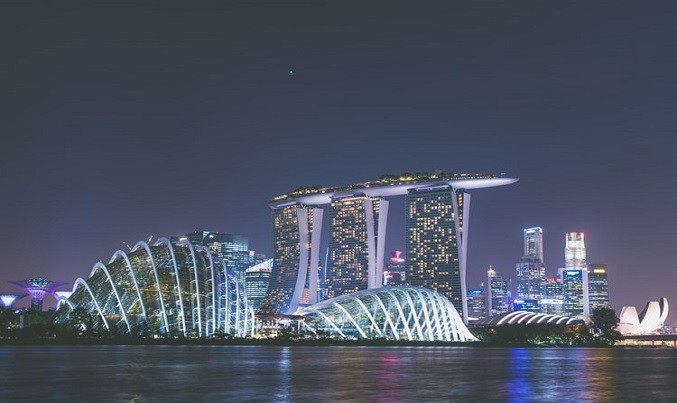Traditionally, the term development is associated with economic development. Recently, that term now involves the different aspects of human development and overall well being and quality of life. The concept of ‘development’ at its simplest merely signifies change in a period of time. On the other hand, “the notion of development... means different things to different people and is contested on many levels.
Development may mean economic growth defined in macroeconomic terms as increases in gross domestic product (GDP), import-export figures, and levels of industrialization. Development may include a human element, such as the ability of humans to meet their basic needs through their own initiative. Development may also mean sustainability, in that economic growth and the ability of humans to meet their basic needs should not deplete natural resources to the extent that those resources become unavailable for future generations” (Weiss, Forsythe, Coate, & Pease, 2014).
But what is international development? “International development is not easy to define and encompasses a broad range of disciplines and endeavors to improve the quality of life of people around the world. It includes both economic and social development and encompasses many issues such as humanitarian and foreign aid, poverty alleviation, the rule of law and governance, food and water security, capacity building, healthcare and education, women and children’s rights, disaster preparedness, infrastructure, and sustainability.” (Graiman, 2011).
In line with this, promoting international development has never been more important after the Second World War, wherein the main focus of the countries was to improve living conditions, alleviate poverty and more importantly rebuild the shattered postwar economy. With the emergence of Bretton Woods Institutions namely the World Bank and the International Monetary Fund (IMF) the playing field of international development institutions evolved rapidly and was given more significance.This is clear in the academe wherein universities provide International Relations studies for students who wish to enter the profession. Similarly, institutions offer a comprehensive ngo management course meant for candidates who want to take up social work and other positions related to the field.
Goals to Accomplish
In recent years, the international community now has systematic aims for development, a great example is the Millenium Development Goals (MDG) signed in 2000 - eight goals of the United Nations member states that must be achieved by 2015. The goals and indicators include combating poverty, hunger, disease, illiteracy, environmental degradation, and discrimination against women. Years have passed and it is evident that we are far from attaining those goals, hence the establishment of MDGs successor; the Sustainable Development Goals (SDGs) also known as Global Goals - which came into effect in 2016 and will be continually funded until 2030. According to the United Nations Development Programme (UNDP), these goals are a universal call to action to end poverty, protect the planet and ensure that all people enjoy peace and prosperity. Not only that but the 17 Goals with 169 targets and 230 indicators build on the successes of the Millennium Development Goals, while including new areas such as climate change, economic inequality, innovation, sustainable consumption, peace and justice, among other priorities. Achieving the SDGs seems like an insurmountable goal to accomplish but there’s an undeniable collaboration within the private sector, civil society, governments, and people. Evidently, the goals intertwine with each other and often than not become associated with each other. Just like ripple effect, when one goal is attained the next will follow. The question still remains if we can ever attain the goals by 2030, but with 11 years left until the deadline, there's no denying that we must have a better sense of urgency.
Measuring Success
How do we actually measure the success of international development? Judging how successful we are in terms of development as a nation or internationally is highly subjective and more often than not debatable. If success would be measured in line with the SDGs, some of the factors would include literacy rates, maternal survival rates, high life expectancy and the overall Human Development Index. Modernization is another fascinating way of measuring development in Third World countries although the availability of electronics does not really measure up development per se.
Constant Changes in International Development
The broadening of global trade, providing of development aid, the increase of International Development Organizations and the upward trajectory of international development grants just goes to show that there will be evolution and growth in the International Development arena. With only 11 years left until the 2030 deadline of the SDGs, the International Development world is at an interesting phase to witness.
Reference:
- Weiss, T. G., Forsythe, D. P., Coate, R. A., & Pease, K. (2014). The United Nations and Changing World Politics. Place of publication not identified: Westview.
- Grieman, V. (2011). Guide on International Development: Public Service Careers and Opportunities. President and Fellows of Harvard College. Available Online: http://www.law.harvard.edu/current/careers/opia/toolkit/guides/documents/developmentguidefinal.pdf
- Johnson, T., & Johnson, T. (2018, October 31). The shifting landscape for international development institutions. Retrieved from https://www.brookings.edu/blog/future-development/2018/10/31/the-shifting-landscape-for-international-development-institutions/
- International Development. (n.d.). Retrieved from http://internationalrelations.org/international-development/
- Millennium Development Goals (MDGs). (2015, June 25). Retrieved from https://www.who.int/topics/millennium_development_goals/about/en/
- SDG Indicators - SDG Indicators. (n.d.). Retrieved from https://unstats.un.org/sdgs/indicators/indicators-list/











